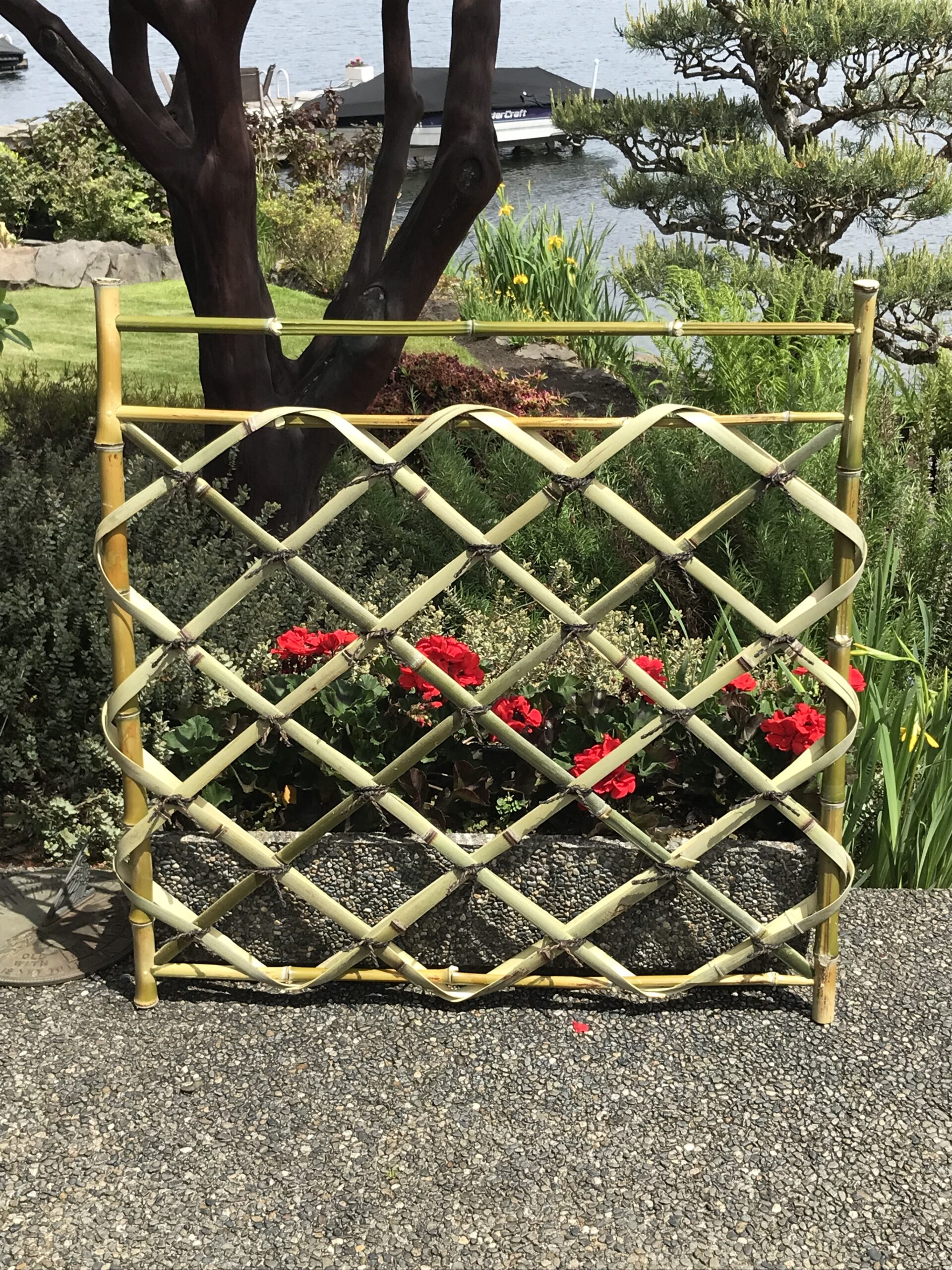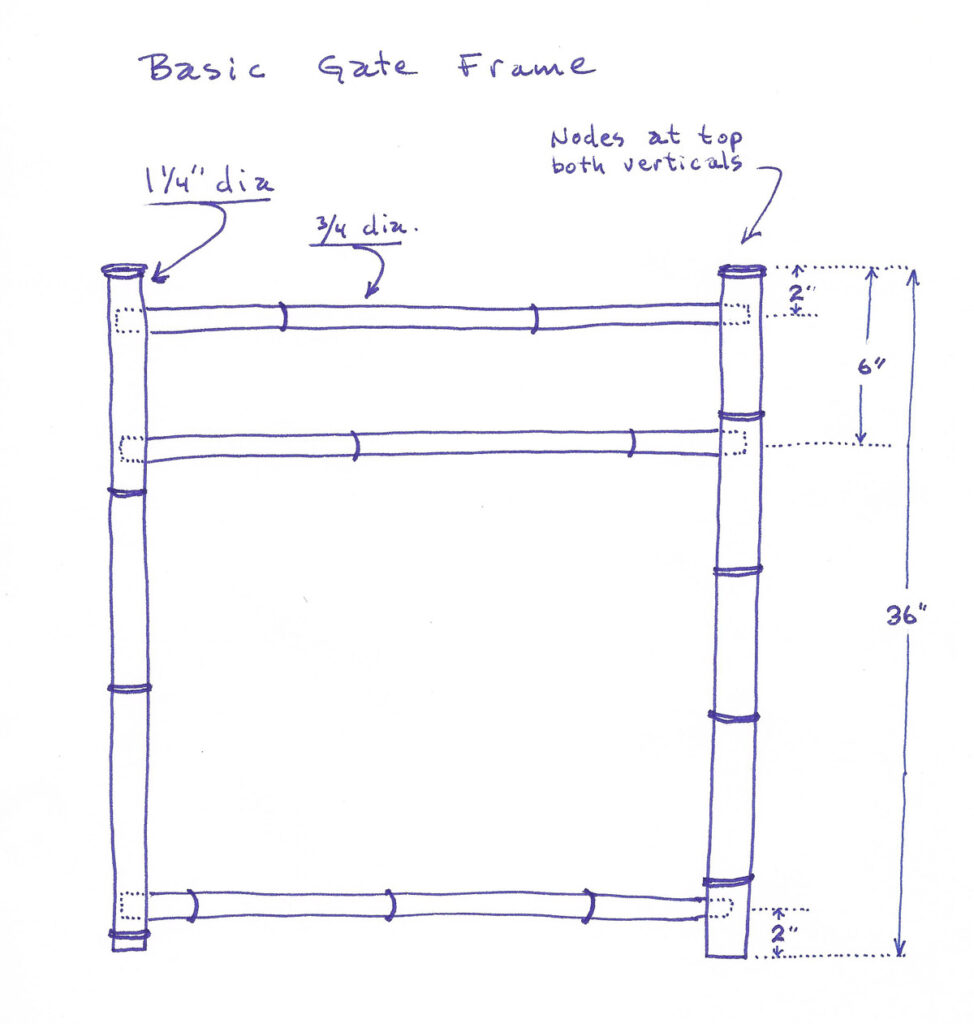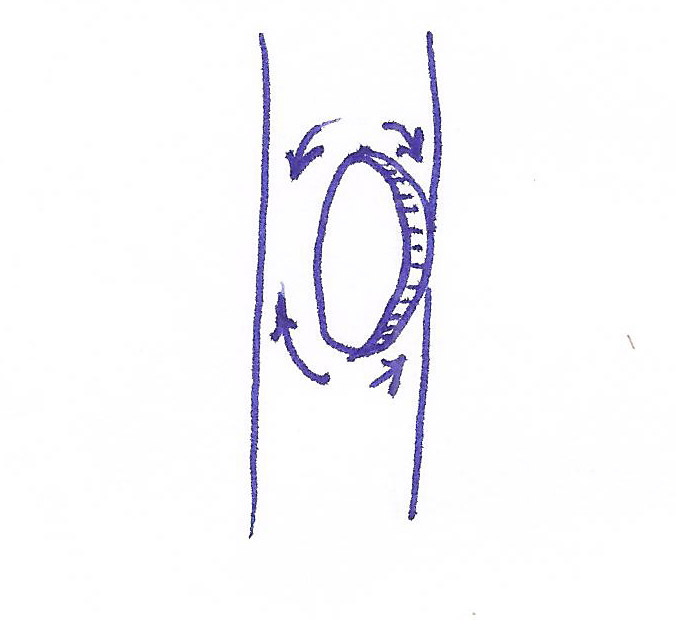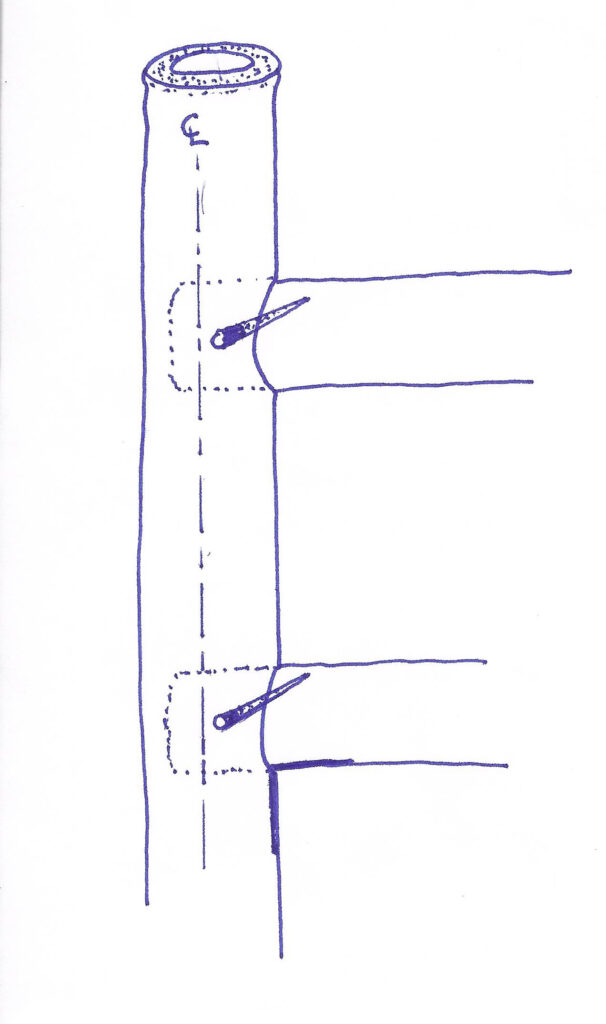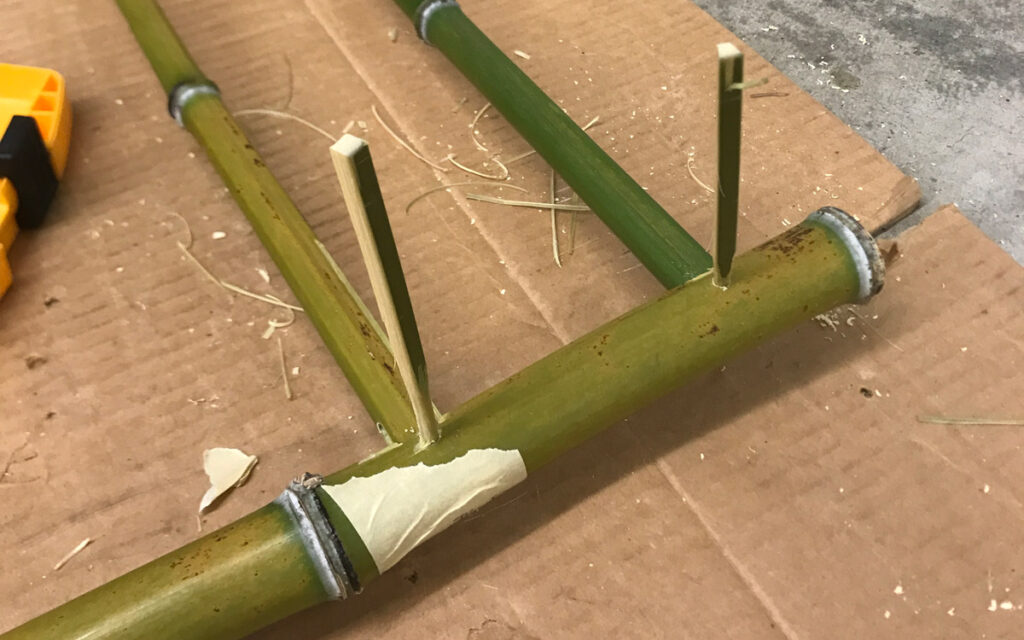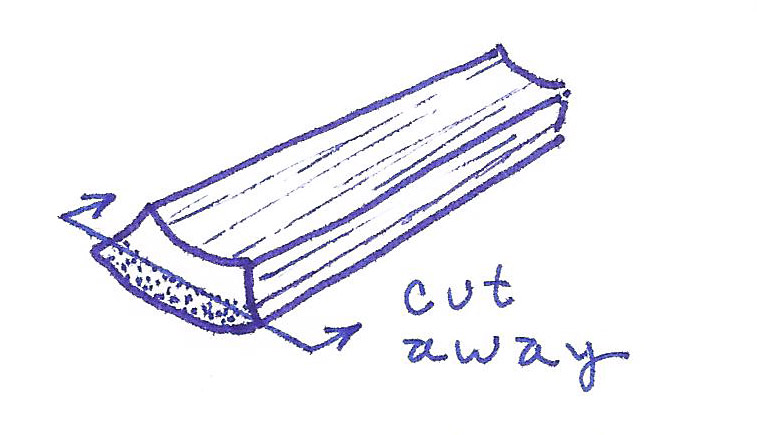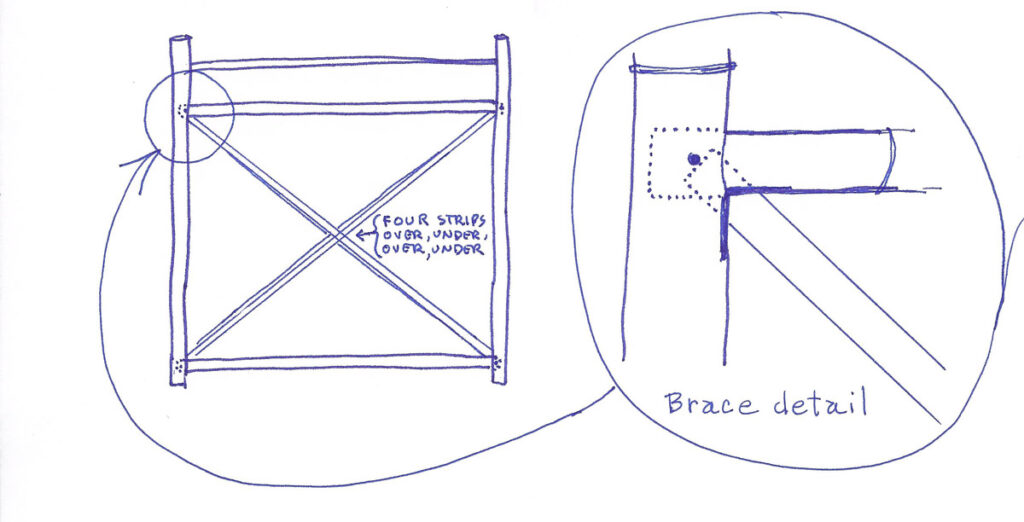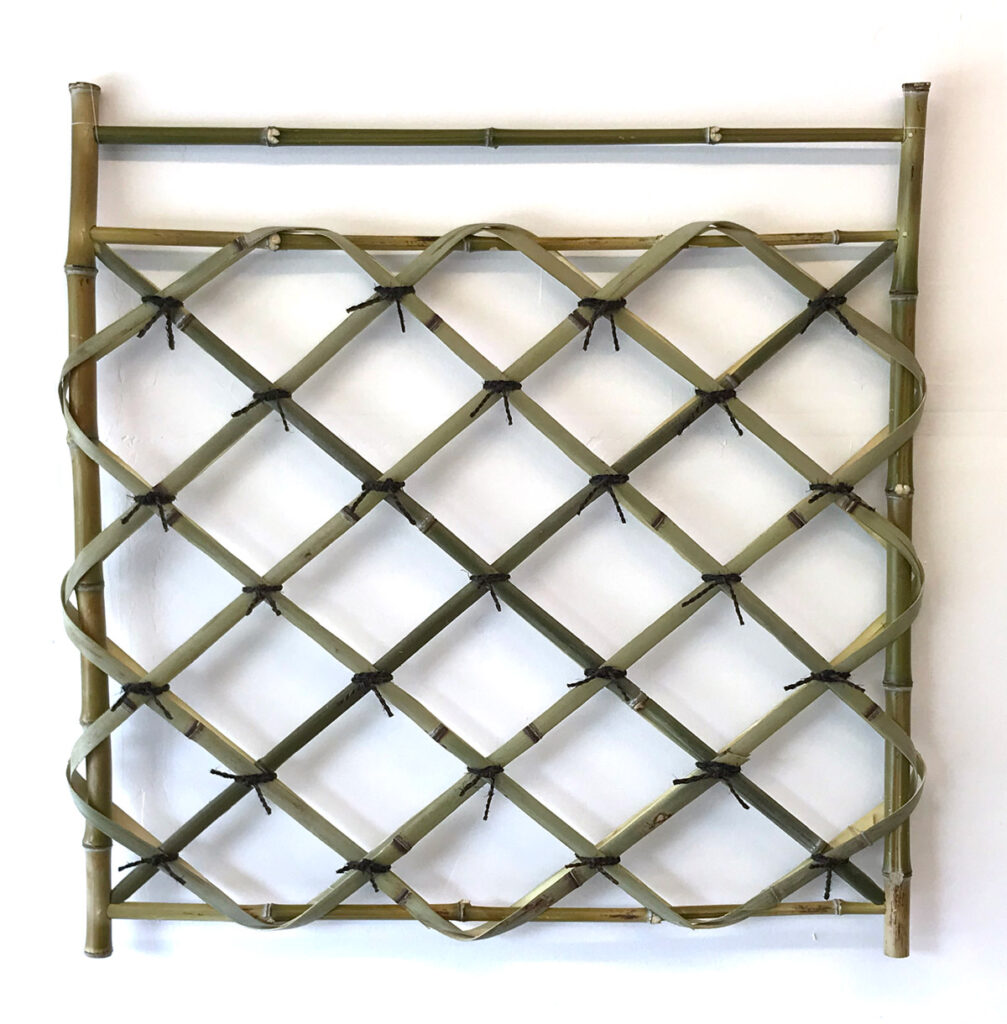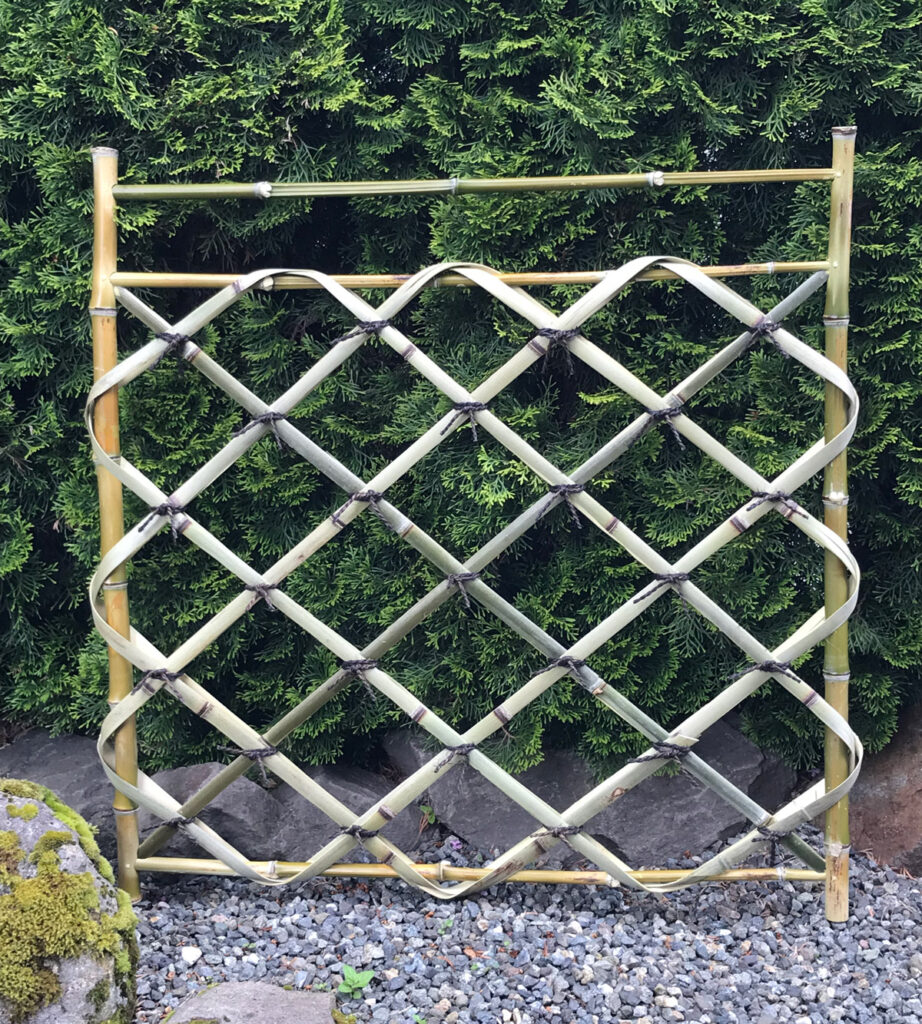A couple years ago, longtime Make: author Len Cullum came to my house to purchase a pile of granite cobbles that I had left over from a driveway project. We chatted a bit and found that we shared an affinity for Japanese aesthetics. I gave him a copy of a little instruction booklet I had made on how to construct a shiorido tea garden gate, which he later shared with the folks at Make: magazine.

Many years ago, at an instructional class at the Portland Japanese Garden, I had made a shiorido, but that gate is long gone. So I told Make: I’d build another one, so that you can see the actual finished product. The design of the gate is not mine. It is a traditional and ubiquitous design, long used throughout Japan.
A shiorido is a very simple light partition inside a garden made by wrapping thin strips of bamboo sheath around a rectangular frame of fine round bamboo poles, weaving the strips into a diamond-shaped pattern. The name shiorido, or “bent branch door,” comes from the bending of the strips of bamboo sheath around the frame.
—Isao Yoshikawa, The Bamboo Fences of Japan
It’s a simple and rewarding build that looks beautiful in your yard or garden. Once you’ve finished making the frame from bamboo poles, also known as canes or culms, you’ll apply the lattice-work of split green bamboo sheathing. For that, you’ll need to search out culms of thin-walled green bamboo, which can be difficult to source, but you’ll find some eventually.
WORKING WITH BAMBOO
• Wear heavy leather gloves when splitting bamboo.
• Place all vertical bamboo to match the direction of natural growth. Observe a node to determine direction (Figure 

• Check poles for “zigzag.” Place zigzag in line of sight with the viewer to hide it.
MAKE YOUR SHIORIDO BAMBOO GATE
To see how the professional folks do this work in Japan, please watch this YouTube video from Japanese Garden TV.
I wish I had access to their bamboo inventory!


